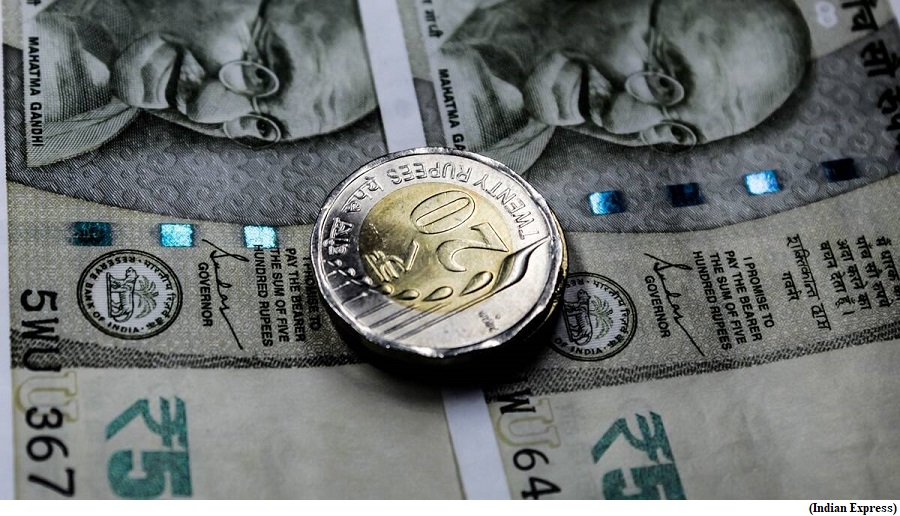A Budget that signals growth with stability (GS Paper 3, Economy)

Context:
- The Economic Survey that was placed in Parliament before the presentation of the Budget for 2023-24 has laid emphasis on the point that India has staged a remarkable broad-based recovery to reach the level of income that existed before the outbreak of the novel coronavirus pandemic.
- Considering the challenges of increasing infrastructure spending while continuing with fiscal consolidation, it has been a fine balancing act on the part of the Finance Minister.
Background:
- There have been a series of shocks that began with the pandemic, followed by the war between Russia and Ukraine and the accompanying sanctions that have been imposed by the West on Russia, the slowdown and the recession in major parts of the world and the rise in inflation leading to sharp increases in interest rates, followed by capital outflow and the pressure on the exchange rate.
Dilemma:
- Even though the economy has staged a recovery and surpassed the pre-pandemic income level, it is still 7% below the pre-pandemic GDP trend; growth has to be fuelled by increasing public investment.
- At the same time, with inflation still beyond the upper tolerance limit and aggregate fiscal deficit (Centre and States) still in the range of 9% to 10% of GDP, ensuring macroeconomic stability requires continued fiscal consolidation.
- Thus the government is faced with the dilemma of accelerating growth by increasing public investment while containing the fiscal deficit. With interest payments accounting for 40% of the net revenues of the Centre, there is hardly any room for complacency.
Fiscal deficit shadow:
- Interestingly, keeping the fiscal deficit limited to 6.4% of GDP in the current fiscal has come about despite a sharp increase in food and fertilizer subsidies, by ₹2 lakh crore.
- While the higher than budgeted buoyancy in net tax revenues by almost ₹1.6 lakh crore has helped, a significant part of the adjustment is due to an increase in the denominator, the nominal value of GDP as compared to the assumption made in Budget 2022-23.
- The Budget estimate had assumed the nominal GDP for 2022-23 at ₹258 lakh crore whereas the first advance estimate of GDP released a few days ago estimated it at ₹273 lakh crore.
- Despite the revenue deficit increasing in absolute terms, from ₹9.9 lakh crore in the Budget estimate to ₹11.1 lakh crore in the revised estimate, as a percentage of GDP, it was from 3.8% of GDP to 4.1%.
- In the case of fiscal deficit, the increase was by ₹1 lakh crore, from ₹16.6 lakh crore to ₹17.6 lakh crore, but it was contained at 6.4% of GDP mainly due to the increase in the nominal value of GDP and also the increase in tax collections.
Capital expenditure:
- Budget 2023-24 has continued the trend of making a greater allocation to infrastructure spending, and the capital expenditure is budgeted to increase from 2.7% of GDP to 3.3%.
- In absolute terms, the increase is from ₹7.3 lakh crore to ₹10 lakh crore, which is almost 37%, and considering that capital expenditure has a significant ‘crowding in’ effect, it should help to increase private capital expenditures as well. This comes after the 25% increase in capital expenditures in the last Budget.
Prospects:
- The Reserve Bank of India has estimated the multiplier effect of capital expenditure at 1.2 and that should help revive the sagging investment climate.
- Commercial lending by banks is already on the rise and with deleveraged balance sheets, the increased capital spending should help revive the investment climate further and arrest the declining trend in the overall investment-GDP ratio in the country.
- Further, the continuation of the interest-free loan to States to augment their capital expenditures should help in increasing States’ capital expenditures as well.
- Perhaps, the 6.5% growth rate for 2023-24 estimated in the Economic Survey, which was otherwise considered too optimistic, could indeed materialise with the budgeted increase in infrastructure spending.
Compression in subsidies:
- The fiscal adjustment is proposed to be achieved by mainly containing revenue expenditure, which will improve the quality of public spending if it happens. The budgeted increase in revenue expenditures for 2023-24 is just 1.2% higher than the revised estimate for the current year.
- There is a significant compression in subsidies. The fertilizer subsidy is expected to be reduced by ₹90,000 crore from ₹2.87 lakh crore to ₹1.87 lakh crore.
- The policy to this effect has already been made in December 2022, when the Pradhan Mantri Garib Kalyan Ann Yojana (PMGKAY) under which 5 kg of foodgrains were given from April 2020, in addition to the foodgrains given under the National Food Securities Act has been discontinued.
- Similarly, the fertilizer subsidy is expected to be compressed by ₹50,000 mainly as fertilizer prices have come down.
- In addition, allocation to centrally sponsored schemes is expected to come down marginally by about ₹20,000 crore, and the overall current transfer to States is kept constant at 3.3%-3.4% of GDP.
Tax side:
- On the tax side, there is some tinkering of customs duty, and the overall protectionist stance has continued. On the personal income tax front, the attempt has been to incentivise taxpayers to move to the new tax regime with no concessions and lower rates.
- Even so, the increase in the number of tax brackets is cause for worry. Perhaps, it would have been preferable to move over to the new tax regime with fewer brackets.
Conclusion:
- On the whole, this is a well-crafted Budget, but its success will depend on its implementation.


